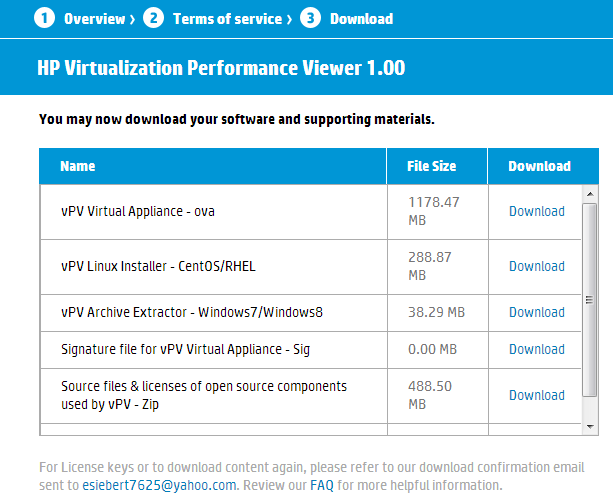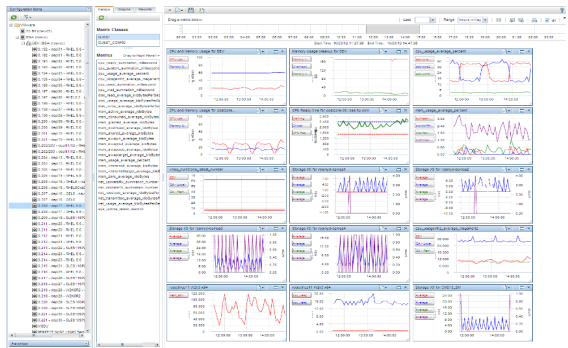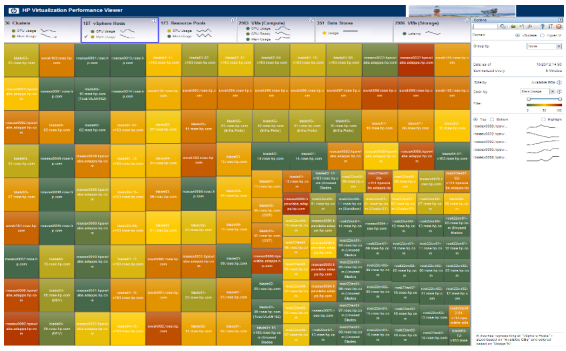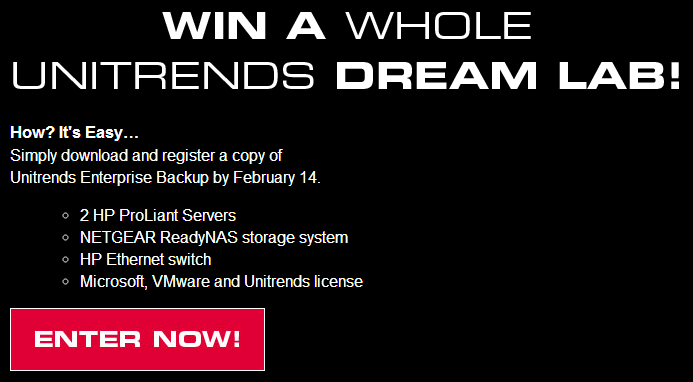Author's posts
Dec 11 2012
Join SolarWinds & I for a 2012 Virtualization year in review podcast
Register now for a webinar that I am presenting tomorrow, 12/12 at 10:30am MST with SolarWinds where I review the big things that have happened with VMware & virtualization in 2012:
Virtualization continues to be one of the hottest technologies in the data center as companies increasingly virtualize their physical infrastructures. The evolution of virtualization has been changing at a very rapid pace mostly due to VMware’s efforts in creating their vision for a software defined data center built on virtualized technologies. 2012 proved to be another big year for VMware and virtualization and featured new product releases, glimpses of the future, leadership changes, licensing changes, increased focus on clouds & VDI and more. Join virtualization industry expert Eric Siebert as he reviews all the big things that happened related to VMware and virtualization in 2012.
Head on over to this page and sign-up and I’ll see you there!
Dec 01 2012
New free tool – HP Virtualization Performance Viewer
This new free tool caught my eye when it was mentioned on an internal email chain, it’s called the HP Virtualization Performance Viewer (vPV). It’s a lightweight tool that provides real-time performance analysis reporting for to help diagnose and triage performance problems. It’s a Linux based utility and can be installed natively on any VM/PC running Linux or it can be deployed as a virtual appliance. It supports both VMware vSphere & Microsoft Hyper-V environments and has the following features:
- Quick time to value
- Intuitive at-a-glance dashboards
- Triage virtualization performance issues in real-time
- Foresee capacity issues and identify under / over utilized systems
- Operational and status report for performance, up-time and distribution analysis
The free version of vPV has some limitations, to achieve the full functionality you need to upgrade to the Enterprise version but the free version should be good enough for smaller environments.

It’s simple and easy to download the tool, just head over to the HP website, enter some basic information and you get the download page where you can choose the files that you want to download based on your install preference.
 Downloading the OVA file to install the virtual appliance is the easiest way to go, once you download it, you simply deploy it using the Deploy OVF Template option in the vSphere Client and it will install as a new VM. Once deployed and powered on you can log in to the VM’s OS using the username root and password vperf*viewer if you need to manually configure an IP address. Otherwise you can connect to the VM and start using vPV using the URL: http://<servername>:8081/PV OR https://<servername>:8444/PV which will bring up the user interface so you can get started. I haven’t tried it out yet as it’s still downloading but here’s some screenshots from the vPV webpage:
Downloading the OVA file to install the virtual appliance is the easiest way to go, once you download it, you simply deploy it using the Deploy OVF Template option in the vSphere Client and it will install as a new VM. Once deployed and powered on you can log in to the VM’s OS using the username root and password vperf*viewer if you need to manually configure an IP address. Otherwise you can connect to the VM and start using vPV using the URL: http://<servername>:8081/PV OR https://<servername>:8444/PV which will bring up the user interface so you can get started. I haven’t tried it out yet as it’s still downloading but here’s some screenshots from the vPV webpage:


I’ll do a more detailed review once I have it up and running but it looks like a pretty handy little tool. For more great free tools be sure and check out my huge free tool gallery that contains links to 100+ free tools for VMware environments.
Nov 27 2012
Win a complete vSphere dream lab from Unitrends
Why would you want your own vSphere lab in the first place, if you read my book I have a whole chapter on it (actually Simon did that chapter), here’s why:
- Exam Study – To provide yourself with an environment where you can easily build a mock production environment to follow examples in any study material you may have and to also confirm to yourself that what you have read in your study material actually works as described in practice.
- Hands-On Learning – Probably the most common reason for putting together your own virtualization lab is to jump onto the kit, wrestle with it and get your hands dirty – breaking it, fixing it and then breaking it again in the process. This is the preferred method of learning for many though for this you obviously do need the luxury of time. Very few of us in IT have the opportunity or access to the necessary non-production hardware during the working day to spend learning a product. With the financially tough times over recent years attending a training course and the often hefty associated price tag has meant that fewer people have had the luxury of learning from a trained instructor making a lab environment a popular choice.
- Centralized Home Infrastructure – Perhaps you are running a home office or need a centralized IT environment from which to run your home PCs for things such as centralized monitoring, management of your kid’s internet access or the family file, music and photo repository.
- Because It’s There (ie: Why Not?) – Some of you, like myself, love to play with new enterprise IT products and technologies, even if it doesn’t have direct application to your personal or work life. A virtualized lab environment provides an excellent platform from which to do this from.
So want your own vSphere lab but maybe are short on funds, no problem, Unitrends has you covered. Unitrends is giving away a complete vSphere dream lab that has all the hardware and software you’ll need to get up and running with vSphere and start cranking out your own VMs. How do you get your chance win this complete vSphere dream lab, it’s pretty simple, just head on over to there website and check out Unitrends Enterprise Backup.
The vSphere dream lab consists of 2 HP servers, HP network switch, NetGear ReadyNAS and the VMware, Microsoft & Unitrends software you need to get everything up and running. I was able to find out some more detail on the hardware specifications:
- HP ML110 G7 servers with Xeon quad-core 3.20 GHz CPU’s that support hyper-threading, this will look like 8 CPU cores to vSphere. These are awesome servers, I have two of the ML110 G6 models in my own home lab, they are quiet, powerful and have 4 PCI slots so you can put lots of NICs in them, they’re also expandable to 16GB or memory. They also support all the vSphere advanced features that rely on specific hardware such as power features, Fault Tolerance and VMDirectPath. You can read the Quickspecs on them here.
- HP V1410-16G Switch, this is a 16-port switch that support gigabit connections, you can read the specs on it here. You’ll need lots of ports if you add more NICs to your servers so you can play around with vSphere networking more, I have 6 NICs in the servers in my lab so I quickly outgrew my 8 port switch.
- ReadyNAS Pro 2TB Storage system, you can read more about it here. I really like the NetGear NAS units, I have one in my home lab and they are very solid, high quality with lots of features.

All in all a nice sweet lab setup, the contest runs from now until Feb. 14th so you have plenty of time to head over there and download and register your copy of Unitrends Enterprise Backup and enter for your chance to win. If if you want to know more about home vSphere labs be sure and check out my massive home labs link collection.
Nov 23 2012
Giving thanks for virtualization

For many, many years, my job role was sort of a swiss army knife of server administration, I managed Windows servers, email servers, application servers, databases servers and much more. I wasn’t particularly passionate about any of the technology I worked with, to me it was simply a job and nothing more. Then about 7 years ago, along came virtualization, the company I worked for wanted to implement virtualization as part of a server refresh/consolidation project. My first experience with virtualization was with ESX 2.5, I was a bit skeptical at first about it, back then virtualization wasn’t anywhere near as mainstream as it is today. I even remember questioning the all your eggs in one basket approach because as a server admin, if that basket ever broke it would make a really big mess for me to clean up. As part of the preparation for the class I had taken a training class and it really opened my eyes to virtualization and was a technology that I found I actually really enjoyed working with. As a result I think for the first time in my life I had found technology that I could truly be passionate about.
For me, virtualization became a defining point in my life and helped launch a whole new career for me. I became very active in the VMTN forums as I really liked sharing my knowledge and experience with others and helping people out. I was so active I achieved Guru status in points (20,000+) in just under a year, despite having not really posted much in many years I’m still in the top 20 in points. I also became one of the early moderators with others such as Jason Boche, Thomas Bryant, Edward Haletky, Steve Beaver and Jase McCarty. The VMTN forums are also what got me started collecting VMware-related links, the same questions would typically come up over and over and rather than answer them in full each time I just posted links that I had collected to other posts that answered them. One day one of the other moderators said why don’t you post your collection of links so I did and from there I started vmware-land.com where I continually grew my link collection. The first iteration was using GoDaddy’s website tonight builder and was pretty crude and basic, from there I built my own site using FrontPage, it gave me more control over the formatting but was a pain in the butt to maintain, you can still see the original site here. I finally moved to WordPress which made things much easier, I still did a bunch of theme hacking though to customize it how I liked it. I also changed the name from vmware-land.com to vsphere-land.com when VMware made the big name change several years back. I still grow and grow my link collections each week, it’s pretty tedious and time-consuming work searching for and noting quality links and them getting them posted to the right categories.
Unknowingly, the VMTN forums also served as a stage for me to get noticed by others, I had one publisher contact me several years back as they noticed me in the VMTN forums about writing a book for them. I did the proposal for them, they liked it and made me an offer and strangely enough that same day another bigger publisher contacted me as well and made me an even better offer. That really launched my writing career, I had never really even thought about writing before but once I started it just seemed natural and I found that I enjoyed it. This lead to my writing my first book which took about 6 months to write, VMware VI3 Implementation & Administration, which unfortunately had bad timing as it was released the same month as vSphere was. Not to be discouraged by that I launched into my second book, Maximum vSphere, for that one I wanted to make the most of timing this time around and have it launch at VMworld. To accomplish that though I had to write the book in 2 months which I did (I got Simon Seagrave to help me on 2 chapters) and made it just in time to launch at the VMworld bookstore. I haven’t had the motivation to write another one yet, it’s a lot of work, you don’t make a lot of money writing tech books and because technology changes so much they have a short shelf life. Who knows maybe someday I’ll do another.
Around that time I also had Tech Target contact me about writing for them, I started writing for searchservervirtualization.com as a newbie writer back in 2008. I migrated to SearchVMware.com after they launched it and became one of the main writers there for many years until I joined HP. I also was noticed by other Tech Target sites and ended up writing for at least 8 other sites including searchstorage.com and searchdatabackup.com. Being an independent writer was fun, I was invited to events such as HP Discover, VMworld, Tech Field Day and more. I was even one of only four of bloggers that VMware flew into San Francisco for their private vSphere 5 launch event that was held in a small little event room and broadcast on the internet. Sometimes I think back and wonder if I enjoyed writing so much, why I didn’t start writing sooner. For me I think virtualization is what provided me the motivation and the spark I needed to ignite my writing career.
All in all I have a lot to be thankful for and I owe a lot of it to virtualization which has enabled me to be part of a huge community of fellow virtualization enthusiasts and meet a lot of great people from all over the world. Virtualization has provide me with a lot of great opportunities and has really given me a sense of direction, a passion, a purpose and a bright future. So when I sit in front of my turkey this Thanksgiving and think about what I’m thankful for, virtualization is near the top of that list. Thank you VMware for making such incredible software that ignites such passion in those that use it and building a community that brings millions across the world together to share in that passion.
Nov 12 2012
Almost time for the annual top blog voting – make sure you’re included

Every year is an election year at vSphere-land! Voting for the annual virtualization top blog contest will begin in January, all blogs that are listed on my vLaunchpad will be put on the ballot. So if your blog isn’t there, now is the time to let me know about it. If I don’t know about your blog, you won’t be listed and you won’t be included in the voting. So head on over to my vLaunchpad and see if you’re listed and that your website URL and twitter/RSS links are correct. If you’re not on there use this form to let me know about it. Be sure and include your blog name & URL, your name and twitter/RSS links.
One thing to note is that I only keep active blogs listed on the vLaunchpad, so any blogs that have not had any new posts in over 6 months I remove from it. I just went through it and removed over 2 dozen stale blogs from it.
Nov 11 2012
VMware Partner Exchange 2013 – new date, new place
VMware’s annual partner conference which is called Partner Exchange (PEX) will be held at the end of February this year and for once a VMware event in Las Vegas will not be at the Venetian where VMworld’s and PEX’s have traditionally been held at in the past. This year PEX is going to be held at the Mandalay Bay hotel in February from Monday, the 25th to Thursday the 28th, the boot camps which are mostly day long events that vendors can put on will be held beforehand on the 23rd-25th.

VMware PEX as the name applies is only open to partners, this includes hardware and software vendors like HP, Veeam, Dell, etc. as well as VARs such as Varrow, it is not intended for customers. The scale of PEX compared to VMworld is much smaller as there are typically only around 4,000 attendees. It is still held in the general format as VMworld with sessions and a Solutions Exchange but on a much smaller scale. In fact the entire Solutions Exchange is held in the same size room as VMworld registration is typically held in which shows you how much smaller it is.
Last year was my first time attending PEX and it was definitely a more intimate crowd and without customers there you were able to network with fellow vendors and partners much easier. If you’re a vExpert there are also special activities for you and last year there was even special signs scattered around acknowledging those part of that elite group. You may not got out of it as much as you do with VMworld but if you’re a partner it’s definitely worth attending. Registration for PEX is not yet open but you can sign-up to be notified when you are able to register. Be sure and checkout VMware’s PEX webpage for more information and look forward to seeing you there.
Oct 22 2012
Veeam’s giving away cool stuff – don’t miss out

Veeam is doing a give away every month until August 2013 where you have the chance to win some cool things like iPads, Microsoft Surface tablets and VMworld 2013 passes. I’m a tablet junkie and the new Surface tablet looks pretty cool, I’ll be definitely adding one to my tablet collection at some point. Unlike some of the Android tablets that are pushing the price point down to under $200, the Surface will be priced at $499 without the smart keyboard for the base model with 32GB of RAM and $599 with the smart keyboard. They’re not cheap so being able to win one for free will save you a lot of cash.
So how do you win, it’s easy, go to this link and put in your name and email address, if you’re one of the lucky ones Veeam may pull your name and a new tablet may be on the way to you. You can’t win unless you sign-up, it’s easy and painless so what are you waiting for.
Want to be a guaranteed winner, also check out Veeam’s Backup Academy which provides free training on data protection technology. I was one of the course instructors along with David Davis, Greg Shields and Rick Vanover. This is a great way to improve your knowledge on backup & recovery with 15 modules focused on specific topics and it won’t cost you a cent. So head on over there and get smarter.




